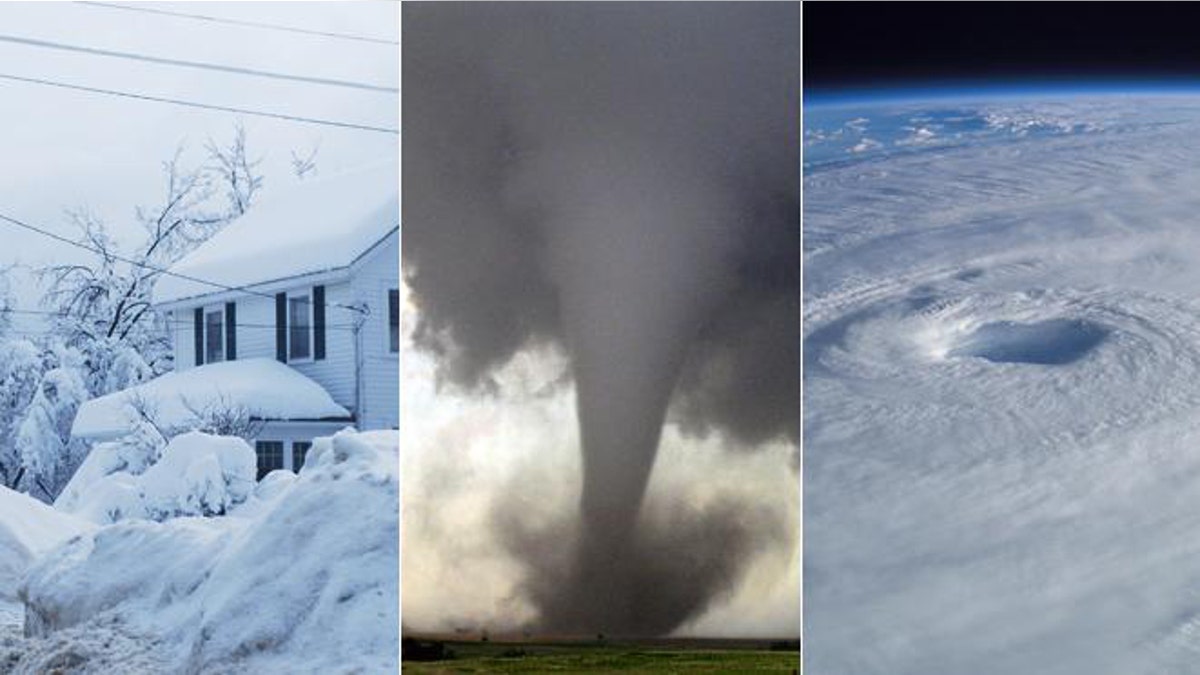
From hurricanes and tornadoes to deep freezes and droughts, extremes of weather are often blamed on global warming.
Greenhouse gases do much more than just warm the planet, some environmentalists warn: They cause hurricanes, floods, tornadoes, droughts, and even extreme cold spells. Or do they?
Steven Goddard, who runs the skeptical climate blog Real Science and has a background in geology and computer science, has spent thousands of hours studying bad weather events around the world.
He found that the weather was wilder and weirder in the past than it is today.
“People are claiming there are more disasters now,” Goddard said. “That’s crazy. The weather was terrible in the past, back when CO2 was below 350ppm."
1) Deadly hurricanes
The deadliest hurricane in U.S. history was not hurricane Katrina, but rather one that hit Galveston, Tex., more than a century ago. The Texas State Historical Association notes that, upon the first signs of the hurricane in 1900, a local weather official drove “a horse-drawn cart around low areas warning people to leave.”
For many, the warning was too late.
[pullquote]
“A storm wave… caused a sudden rise of 4 feet in water depth, and shortly afterward the entire city was underwater to a maximum depth of 15 feet.”
The hurricane destroyed most of the city, killing between 10,000 and 12,000.
“Hurricanes have not become more frequent or intense,” University of Alabama climate scientist John Christy told FoxNews.com. NOAA hurricane records back up that claim.
“The story on hurricanes is a mixed bag,” says Brenda Ekwurzel, a climate scientist at the Union for Concerned Scientists.
2) Melting Glaciers
Glaciers are melting around the world, and many worry that will cause flooding. But the melting is not necessarily due to greenhouse gases. Goddard points to places where glaciers nearly vanished due to natural warming.
Glacier Bay, in Alaska, is one such place. The glacier was discovered in 1794, but the National Park Service reports that “by 1879… naturalist John Muir discovered that the ice had retreated more than 30 miles ... By 1916 it … had melted back 60 miles.”
3) Extreme Cold
It was so cold in New York City that the rivers around Manhattan froze over for five weeks -- in 1780, that is. British troops occupying the city at the time rolled cannons from Manhattan across the ice to Staten Island. They even built temporary fortifications on the ice, which stayed solid enough to support men on horseback until March 17.
Throughout the 1800s, the rivers froze over at least six times.
4) Extreme Heat
Many scientists argue that greenhouse gases have made extreme heat events more common.
“If we keep putting heat-trapping gases into the atmosphere at current rates, we can expect a city like NYC to go from having less than 10 days over 100F to between 30 and 45 [such days] by the end of the century,” Ekwurzel of the Union for Concerned Scientists told FoxNews.com, citing a government study.
But Goddard notes that heat waves are nothing new. One newspaper reported that on June 5, 1921, the temperature in New York rose to 107 degrees. In Washington, DC, “an egg carefully broken ... on an asphalt pavement … as an experiment was completely fried in 9 minutes.”
The deadliest heat wave in U.S. history also struck long ago, in 1936, causing some 5,000 deaths nationwide.
“Twenty-four of the lower 48 states set their all-time temperature records in the 1930s,” Goddard said. “Just one state [Arizona] has set a new record since the turn of the millennium.”
That shows that U.S. weather has been more extreme in the past, but does not indicate whether climate has warmed in general.
“The warmest month in U.S. history was July of 1936 -- and the coldest month in U.S. history was February of that same year,” Goddard said, noting that such rapid changes were due to fluctuations in a major air current known as the jet stream.
5) Drought
The worst drought in U.S. history also took place in the 1930s, destroying so many crops in the Midwest that, as a USDA report put it, “The eroding soil from once-productive range and crop lands filled the air with billowing clouds of dust that subsequently buried farm equipment, buildings and even barbed-wire fences.”
The disaster became known as “The Dust Bowl,” as 2.5 million Americans abandoned their farms.
“Climate was never safe,” Goddard said. “You had horrific fires, droughts, floods, heat waves -- it hasn't gotten any worse with the CO2 increase.”




















